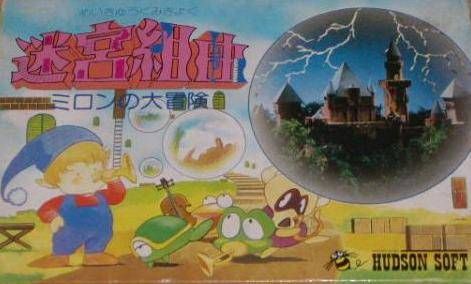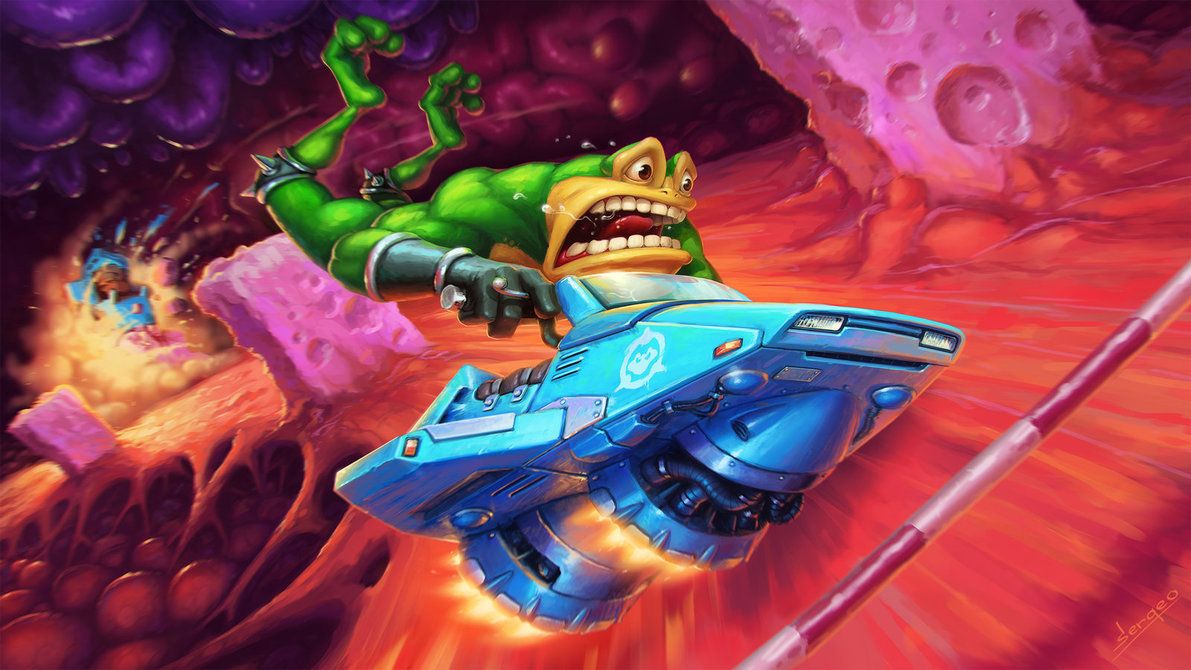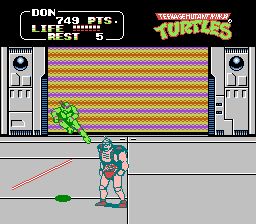
The Nintendo Entertainment System (NES), launched in the mid-eighties, revolutionized the gaming industry and is credited by many with saving it. The NES brought legendary games like Super Mario Bros. and Final Fantasy, which remain popular today. Despite advancements in gaming technology, the NES still boasts some of the best video games ever made.
Back then, video games existed without the internet, making hidden secrets, codes, and easter eggs harder to find. Gamers relied on word of mouth or magazines to uncover these mysteries, adding a sense of excitement and discovery to NES games. Even now, the NES holds secrets that many may have overlooked. Here are some of the coolest ones you might’ve missed
1.Contra Wasn’t the Only Game to Feature This Code!

The Konami Code is undoubtedly the most famous cheat code in gaming history, and most gamers can easily recall the combination: Up, Up, Down, Down, Left, Right, Left, Right, B, A, Start. While it gained notoriety in Contra for granting thirty extra lives, it was also featured in many other games.
If a game had the Konami logo during the NES era, chances were the code would work. Though its effects varied between titles, the code was present in games like the Gradius series, Life Force, Teenage Mutant Ninja Turtles II & Teenage Mutant Ninja Turtles III and Top Gun: The Second Mission. Even beyond the NES, the Konami Code found its way into future games.
2.Pro Tip for Beating a Tough Boss

Secret Trick to Knock Out Bald Bull in One Hit!
In Mike Tyson’s Punch Out!!, each opponent has unique attack patterns to memorize, but Bald Bull has always been a challenging match. However, there’s a hidden way to knock him out in one blow. Gamers knew of a one-hit K.O., but the exact timing was a mystery for years.
Nearly 30 years later, a surprising discovery was made: a bearded spectator in the audience signals when to deliver the final punch. When this spectator moves, it’s the perfect moment to land the blow, making this tough boss much easier today
3.Even warriors need a break

Many adventurers likely overlooked this neat little secret until long after the initial release of Final Fantasy, often needing a gaming magazine or a friend’s tip to discover it. Hidden within the game’s ship is a fun puzzle game.
This puzzle appears in nearly every version of the original Final Fantasy, with slight variations in how to unlock it. In the NES version, simply press A and B together 55 times while on the ship to access the game, where you must arrange 15 tiles in numerical order to earn various gil and item rewards
4.An Alternative to “Thanks”

The Super Mario Bros. series is well-known for its secrets and Easter eggs, starting from the original game. While many players are aware of the warp whistles and ways to skip levels in Super Mario Bros. 3, it’s possible to bypass the final level of each world and avoid meeting the Mushroom Kingdom’s kings—except for the first world. This often leads gamers to overlook the fact that the kings have various “Thank You” messages when they revert to human form.
After completing each world, Mario receives a scripted “Thank You” from the king. However, this message changes if Mario completes the final level while wearing specific suits like the frog suit, Tanooki suit, or Hammer Bros. suit—outfits that players might not typically use to finish a level. Winning the last level in one of these suits alters the king’s message to Mario
5.Wet Cement Is Irresistibly Tempting

Video game developers have a penchant for sneaking their initials into their creations. In California Games, released in 1989 for the NES, this playful act is evident. This sports-themed game features activities popular in California, like surfing, biking, and roller skating.
In California Games, uncovering the developers’ initials is a straightforward task compared to other games. On the main entry screen, simply enter the names “Paul” or “Rachel” to start the skating game. If you reach the end of the level, you’ll spot the initials “PP & RME” flashing in the wet cement, honoring developers Paul Proctor and Rachel M. Edwards
6.Who Is LMD?

Landon M. Dyer programmed the original NES port of Donkey Kong and included a hidden Easter egg in the title that was nearly impossible to discover. Surprisingly, this Easter egg remained unnoticed for about 26 years after the port’s release.
To uncover Landon’s initials in the game, players had to perform a specific sequence of actions. First, they needed to achieve a high score of either 37,000, 73,000, or 77,000 points. Next, the player had to intentionally fall to their demise and then set the game difficulty to 4. After that, they had to wait for the demo screen to play, and when returning to the title screen, the initials “LMD” would appear
7.The Secret Ending Isn’t Worth the Trouble

Discussing video game secrets in a title steeped in mystery is quite an oxymoron. Milon’s Secret Castle is set in an expansive castle filled with enigmas: secret passageways, hidden switches, concealed shops, and mysterious items. It’s hard to believe that anyone could navigate through this game successfully. With its seemingly random puzzles and steep difficulty, most players never reached the end of Milon’s Secret Castle, let alone completed it twice.
However, developer Hudson made it a requirement to beat the game twice to uncover a secret hidden message. Complete the game back-to-back, and you’ll unlock an alternate ending screen that reads, “This is the end of episode I. See you again!” Ultimately, it’s not worth the effort, and it’s unlikely that many players were eager for a sequel after their experience with the game.
8.A Salute to Mario

Released in 1987 by Lucasfilm for the Commodore 64 and Apple II, Maniac Mansion was ported to the NES the following year by Jaleco. This version featured several changes, including a more sanitized environment that removed curse words and potentially offensive content to meet Nintendo’s standards. However, the game contained an overlooked instance where players could microwave a hamster, leading to the cancellation of further shipments due to non-compliance with Nintendo’s guidelines.
Notably, the NES version included a hidden reference to the original Super Mario Bros. theme. By inserting a coin into the “Meteor Mess” arcade cabinet in the game’s arcade room, players could hear the opening notes of one of gaming’s most iconic melodies. Although this musical snippet lasts only about a second, it’s instantly recognizable from the first few notes.
9.Extra Lives Are Essential

When people think of the video game developer Rare, they often recall classics like Goldeneye 007 and Donkey Kong Country, but many overlook that Rare also created the beloved Nintendo classic Battletoads. Inspired by the popularity of the Teenage Mutant Ninja Turtles, Battletoads features three anthropomorphic toads fighting their way through various levels to defeat the Dark Queen.
Most players who attempted this game never reached the final boss, especially struggling with the high-speed hover-bike level just a few stages in. The game is notoriously challenging, and playing with a second player adds to the frustration due to friendly fire and the consequences of partner deaths. Fortunately, there’s a way to ease the difficulty a bit. At the title screen, pressing A and B simultaneously, followed by Start on the title or continue screen, grants a few extra lives to help you on your journey—though it might not make much of a difference
10.Heading Directly to the Technodrome

The Teenage Mutant Ninja Turtles arcade game wasn’t the first video game inspired by the popular TMNT franchise, but it was certainly the first to be truly successful. Its popularity naturally led to a home console port, allowing kids to join the turtles in their adventures without having to insert countless quarters into an arcade machine. Titled Teenage Mutant Ninja Turtles II: The Arcade Game (to distinguish it from an earlier, very different prequel on the system), this version was a faithful adaptation, though it did sacrifice some graphics and the ability for four-player action. It even featured additional levels not available in the arcade!
While this game was an improvement over its predecessor, it was also significantly easier. Nevertheless, players enjoyed multiple playthroughs. Tired of starting at the first level every time? Just input the code B, A, B, A, Up, Down, B, A, Left, Right, B, A, and then Start at the title screen to begin with extra lives and at any level you choose
11.Stripping Away the Armor

In today’s gaming culture, it’s widely known that Samus Aran, the iconic star of Metroid, is a female character. However, back in 1986, this was a surprising revelation since she was entirely encased in her power armor. The game ends with a dramatic moment where Samus removes her helmet, unveiling her identity as one of the first significant female protagonists in gaming history.
Interestingly, if you knew the secret code, you could actually remove her power suit at the start of the game. By entering the name “Justin Bailey” on the password screen—after one of the game’s programmers—you could begin your adventure without Samus’s armor
12.Sacrificing for the Group

In the early days of video gaming, nothing was more frustrating than life stealing—a common feature in many NES games. When playing with two players, the less experienced player often lost lives more quickly than their more skilled counterpart. Unfortunately for the better player, many games allowed the second player to snatch lives from the one still in play, whether they liked it or not.
Bubble Bobble was one such game that included this annoying mechanic, although it was slightly more discreet compared to others like Contra, where a simple simultaneous press of the A and B buttons would do the trick. In Bubble Bobble, the other player needed to pause the game first and then hit select to steal a life
13.Soaring Towards the Stars

Nintendo has always been known for sneaking in quirky easter eggs, and Mega Man 2 is no different. While the game lacks traditional codes for enhancing gameplay or a complex password system, it still contains hidden secrets that players might not be aware of.
One such secret activates after you select a level. Normally, when you pick a stage by choosing the boss’s image on the stage select screen, the boss jumps onto the screen with a backdrop of shooting stars. However, there’s a way to swap out those stars for a pattern of flying birds. To make this change, simply hold the A button while selecting your stage
14.Journey to the Fairy Spring

Many gamers recognize the “Fairy Fountain” theme, a beloved tune in The Legend of Zelda series, beginning with The Legend of Zelda: A Link to the Past. What many might not know is that this theme actually traces its roots back to Super Mario Bros. 3.
While this isn’t exactly an Easter egg—since the song first appeared in World 3 of Super Mario Bros. 3 and later influenced the “Fairy Fountain” theme in A Link to the Past—the similarities between the two melodies often went unnoticed for a long time. Essentially, they are the same tune, though the Super Mario Bros. 3 version is more upbeat, while The Legend of Zelda’s rendition has a calmer, more soothing quality
15.The Dragon Warrior Couldn’t Stand Up to Garland

Final Fantasy games are renowned for being filled with secrets, with hidden Easter eggs and concealed areas tucked away in every corner throughout the series’ extensive history. As the games have grown in scale over time, even the smaller titles have managed to include their own share of secrets, starting with the original Final Fantasy on the NES.
In the town of Elfheim, located southwest of Cornelia—the starting town of the game—players can find a small graveyard dotted with a few tombstones. One tombstone bears the inscription “Here lies Erdrick,” a reference that likely went unnoticed by many players upon the game’s initial release. The name Erdrick hails from another classic RPG that launched on the NES, Dragon Quest. In later remakes of the original Final Fantasy, the name was changed to Link, nodding to the Hero of Time from The Legend of Zelda. Curiously, Erdrick’s gravestone also appears in the Japanese version of The Legend of Zelda II: The Adventures of Link. It seems like poor Erdrick just can’t catch a break!
16.Harmony in My Heart

n the era of the original NES, it was quite common for developers to include cheat codes within their games, often unknown to players until discovered by gaming magazines or shared through word of mouth. By entering specific button combinations, players could unlock various game features, such as extra lives, continues, level selections, or even sound tests!
The first Ninja Gaiden for the NES features a hidden sound test screen, allowing players to listen to different tracks from the game’s 8-bit soundtrack. To access this, players simply had to hold A, B, Left, Down, Select, and then press Start when the screen displays “Tecmo Presents 1989.” This was especially helpful, as players would likely never experience the full soundtrack given the game’s notorious difficulty. Too bad the code didn’t unlock something more beneficial, like invincibility!
17.You’ve dialed a number that is no longer in operation

When Punch-Out!! for the NES came out in 1987, it was a novel take on boxing. The player takes on the role of Little Mac, the main character, and has to battle boxers from all over the world, including Mike Tyson, the boxing champion. Unlike other Nintendo titles, the game is set in a realistic universe, yet it also has a number of Easter eggs from other Nintendo properties.
The majority of people noticed that Mario, Nintendo’s iconic mascot, appeared in the game when the cartridge was booted up since he serves as the referee. However, the game also made a more subtly Nintendo allusion.The game has a pass key system to access various battles; however, one particular pass key is actually Nintendo’s previous customer support number. Entering “8004222602” will result in a busy signal on your phone, referring to Nintendo’s previous customer support number that was unavailable at the time the game was first released.
18.Bravery in Numbers: Don’t Face the Risks Alone!

The Legend of Zelda is known for its difficulty, often regarded as the toughest game in the series. It faces competition only from its sequel, The Adventures of Link, and some less-than-stellar spin-offs that are best left unmentioned. In contrast, the more recent titles in The Legend of Zelda franchise have adopted a more forgiving approach to difficulty, focusing more on puzzle-solving than on combat challenges. However, for those who thrive on challenge, there’s a second quest within the game designed to ramp up the difficulty.
Successfully completing the game unlocks this second quest with increased challenges, but players can access it immediately by naming their save file “Zelda.” This was likely a common mistake in the 1980s, as many players assumed the main character was the titular princess. Additionally, an intriguing detail is that Zelda’s name is cleverly hidden within the maps of the first five dungeons, with each map corresponding to a letter in her name. When rearranged, these letters spell out the name of Hyrule’s beloved princess
19.Long-Term Lost Track

Fans of the original Super Mario Bros. weren’t exactly prepared for the sequel, Super Mario Bros. 2. It removed the game’s well-known opponents, had completely new gameplay aspects, and did not include the Mushroom Kingdom. The main reason for this is that Super Mario Bros. 2 wasn’t a Mario game at first; rather, it was a re-skinned version of Doki Doki Panic. The original sequel, which eventually made its way to North America as Super Mario Bros. The Lost Levels, was deemed too challenging.
However, Nintendo still managed to include a little Easter egg referencing the original game despite this. When you drop a potion that opens a door that transports you to a shadowed version of the region you are in, you will likely hear a tune you recognise. Although the original Super Mario Bros. theme song plays in these locations, you might be surprised to learn that you can play it back out the door into the real world. If you receive a star power up, you can hear the original theme tune for a little while longer on the actual level if you go through the door and come out again just before the star is about to run out of power.




